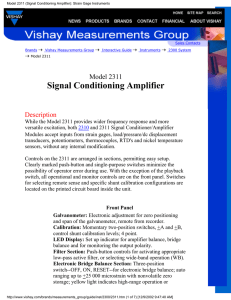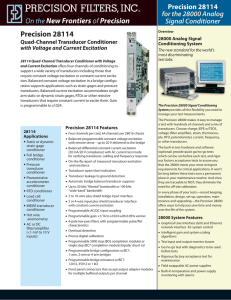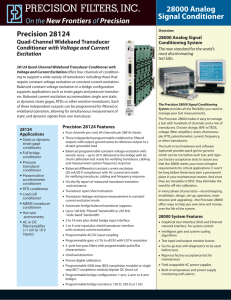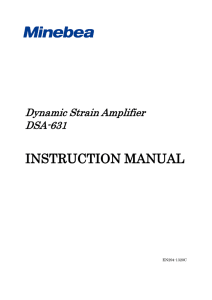Load Cell Calibration The load cells
advertisement
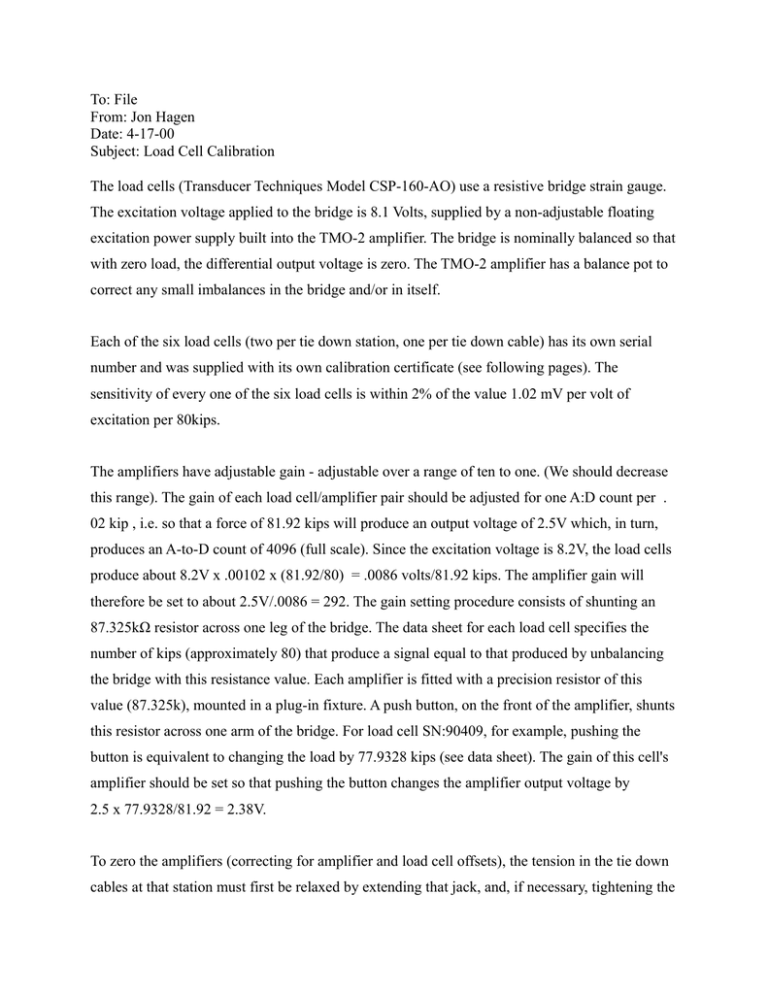
To: File From: Jon Hagen Date: 4-17-00 Subject: Load Cell Calibration The load cells (Transducer Techniques Model CSP-160-AO) use a resistive bridge strain gauge. The excitation voltage applied to the bridge is 8.1 Volts, supplied by a non-adjustable floating excitation power supply built into the TMO-2 amplifier. The bridge is nominally balanced so that with zero load, the differential output voltage is zero. The TMO-2 amplifier has a balance pot to correct any small imbalances in the bridge and/or in itself. Each of the six load cells (two per tie down station, one per tie down cable) has its own serial number and was supplied with its own calibration certificate (see following pages). The sensitivity of every one of the six load cells is within 2% of the value 1.02 mV per volt of excitation per 80kips. The amplifiers have adjustable gain - adjustable over a range of ten to one. (We should decrease this range). The gain of each load cell/amplifier pair should be adjusted for one A:D count per . 02 kip , i.e. so that a force of 81.92 kips will produce an output voltage of 2.5V which, in turn, produces an A-to-D count of 4096 (full scale). Since the excitation voltage is 8.2V, the load cells produce about 8.2V x .00102 x (81.92/80) = .0086 volts/81.92 kips. The amplifier gain will therefore be set to about 2.5V/.0086 = 292. The gain setting procedure consists of shunting an 87.325kΩ resistor across one leg of the bridge. The data sheet for each load cell specifies the number of kips (approximately 80) that produce a signal equal to that produced by unbalancing the bridge with this resistance value. Each amplifier is fitted with a precision resistor of this value (87.325k), mounted in a plug-in fixture. A push button, on the front of the amplifier, shunts this resistor across one arm of the bridge. For load cell SN:90409, for example, pushing the button is equivalent to changing the load by 77.9328 kips (see data sheet). The gain of this cell's amplifier should be set so that pushing the button changes the amplifier output voltage by 2.5 x 77.9328/81.92 = 2.38V. To zero the amplifiers (correcting for amplifier and load cell offsets), the tension in the tie down cables at that station must first be relaxed by extending that jack, and, if necessary, tightening the other jacks and moving the azimuth and elevation of the dome.


